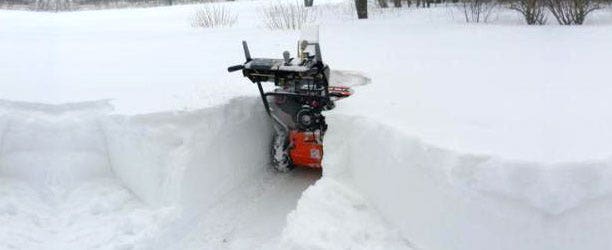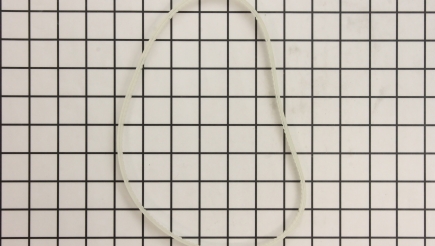In this article, we will discuss the common issue of snowblowers not throwing snow far enough. We will explore the possible reasons behind this problem and provide some practical solutions to help you improve the performance of your snowblower. By the end of the article, you will have a better understanding of why your snowblower may not be throwing snow far enough and what steps you can take to fix it. So, let’s get started and make sure your snowblower is ready to tackle the next snowfall! When winter hits and the snow starts piling up, a snowblower becomes an essential tool for many homeowners. It makes the back-breaking task of shoveling snow a thing of the past. However, if you’ve noticed that your snowblower isn’t throwing snow as far as it used to, or if it has never thrown snow far enough, there may be some common causes for this issue that you can address.
Common Causes of Limited Snow Throwing Distance
Insufficient Engine Power
One of the primary reasons why your snowblower may not be throwing snow far enough is due to insufficient engine power. Snowblowers come in different sizes with varying engine power, and if you have a smaller model, it may struggle with throwing snow a significant distance.
Improper Fuel Mixture
A common culprit for reduced engine power is an improper fuel mixture. If you’re using stale gasoline or not following the manufacturer’s recommended fuel-to-oil ratio, it can lead to engine inefficiencies and limited throwing distance.
Dirty or Clogged Air Filter
Another issue that affects engine performance is a dirty or clogged air filter. The air filter is responsible for the proper flow of air into the engine, and if it becomes clogged with dirt and debris, it can restrict the airflow, resulting in decreased power and throwing capability.
Worn Spark Plug
A worn spark plug can also be a factor in limited snow throwing distance. The spark plug ignites the fuel mixture in the engine, and if it’s worn or faulty, it can lead to incomplete combustion, reduced power, and decreased snow throwing performance.
Clogged Auger or Chute
Another common cause of limited snow throwing distance is a clogged auger or chute. The auger is the rotating blade that collects and feeds snow into the chute, where it is thrown out. If either of these components becomes clogged, it can greatly reduce the snow throwing distance.
Excessive Snow Accumulation
While it may seem obvious, excessive snow accumulation is a common reason for clogged augers and chutes. If too much snow builds up, it can overwhelm the snowblower’s capacity, leading to clogs and reduced throwing distance.
Debris or Ice Blockage
Debris, such as twigs, leaves, or rocks, can also obstruct the auger and chute, preventing proper snow throwing. Additionally, if the temperatures fluctuate and the snow becomes partially melted and refreezes, it can create ice blockages that impede the movement of the blades.
Faulty Shear Pins
Shear pins are designed to break if the auger becomes jammed, protecting the motor and gearbox from damage. However, if the shear pins are worn or broken, it can cause the auger to seize up and result in limited snow throwing distance.
Worn or Damaged Auger or Impeller Blades
The auger and impeller blades are essential components for throwing snow. If they are worn or damaged, it can significantly impact the snow throwing performance of the snowblower.
Blade Dullness or Damage
Over time, the blades of the auger and impeller can become dull or damaged. Dull blades struggle to grip and throw snow effectively, resulting in diminished throwing distance. Similarly, any physical damage to the blades can also impair their ability to remove and propel snow.
Misalignment of Blades
Another issue that affects the auger and impeller blades is misalignment. If the blades are not properly aligned, they may not engage with the snow properly, leading to reduced throwing distance.
Excessive Wear and Tear
With regular use, the blades of the snowblower can become worn due to wear and tear. This can cause them to lose their original shape and function, resulting in decreased snow throwing capabilities.
Factors Affecting Snow Throwing Distance
In addition to the common causes mentioned above, several factors can affect the snow throwing distance of a snowblower. It’s essential to understand these factors to optimize your snow clearing performance.
Wet or Heavy Snow
Wet or heavy snow can be challenging for any snowblower to handle. The density and weight of this type of snow can strain the machine’s capabilities, causing a decrease in throwing distance.
Snow Density
The density of the snow can significantly impact the throwing distance. Light, fluffy snow is easier to throw because it is less dense, while heavy, compacted snow requires more power to propel it a significant distance.
Wind Direction and Speed
The direction and speed of the wind can either aid or hinder the throwing distance of a snowblower. If the wind is blowing in the same direction as you’re throwing the snow, it can help carry the snow farther. On the other hand, if the wind is blowing against the direction you’re trying to throw the snow, it can impede the throwing distance.

This image is property of www.rcpw.com.
Optimizing Snow Throwing Performance
To improve the throwing distance of your snowblower and clear snow more effectively and efficiently, there are a few steps you can take.
Proper Maintenance Routine
Regular maintenance is crucial for optimal snowblower performance. This includes following the manufacturer’s recommended maintenance schedule, such as changing the oil, inspecting and replacing worn parts, and keeping the machine clean.
Clearing any Blockages
If you encounter a clogged auger or chute while using the snowblower, it’s essential to clear it promptly. Shut off the machine, wait for all moving parts to stop, and clear any debris or ice blockages before continuing.
Adjusting the Chute and Auger
Properly adjusting the chute and auger can help improve snow throwing performance. The chute should be directed at an appropriate angle to achieve the desired throwing distance, while the auger should be properly aligned and in good condition for optimal snow collection and propulsion.
Choosing the Right Snowblower
When selecting a snowblower, there are specific factors to consider to ensure it meets your snow clearing needs.
Considering Engine Power
Choosing a snowblower with adequate engine power is essential. If you frequently face heavy or wet snowfall, opt for a model with higher horsepower and torque to ensure it can handle the task effectively.
Evaluating Auger and Impeller Design
The design of the auger and impeller also plays a crucial role in the snow throwing distance. Look for models with robust and durable blades that are designed to effectively collect and propel snow.
Looking for Adjustable Features
Certain adjustable features, such as an adjustable chute, allow you to control the direction and angle of the snow throwing. This enables you to optimize the throwing distance based on the specific conditions you’re facing.

This image is property of safetyconsumer.com.
Safety Tips for Snowblower Use
Using a snowblower involves inherent risks, and it’s essential to prioritize safety when operating the machine.
Using Protective Gear
Before operating the snowblower, make sure to wear appropriate protective gear, such as safety goggles, gloves, and sturdy footwear. This will help protect you from flying debris and provide better grip and stability on slippery surfaces.
Being Mindful of Surroundings
When using a snowblower, it’s crucial to be aware of your surroundings. Ensure there are no obstacles or people in the immediate vicinity before starting the machine. Be cautious when maneuvering around driveways, paths, and other areas to avoid hitting objects or causing damage.
Avoiding Loose Clothing or Jewelry
Loose clothing or dangling jewelry can get caught in the snowblower’s moving parts, posing a significant safety hazard. Make sure to wear fitted clothing and remove any jewelry or accessories that may become entangled.
When to Consult a Professional
If you’ve tried troubleshooting the issues with your snowblower and the throwing distance is still limited, it may be time to consult a professional.
Persistent Issues despite Troubleshooting
If you’re experiencing persistent problems with your snowblower, even after following the recommended troubleshooting steps, it’s best to seek professional assistance. A trained technician can diagnose and address any underlying issues that may be affecting the throwing distance.
Complicated Repairs
Certain repairs may require expertise beyond what an average homeowner possesses. If you’re uncomfortable or unsure about performing complex repairs, it’s advisable to seek the assistance of a professional.
Need for Expert Advice
If you’re uncertain about the capabilities or limitations of your current snowblower, consulting with an expert can help guide you in choosing the right model for your needs. They can provide valuable insights and recommendations based on your specific circumstances.

This image is property of sp-ao.shortpixel.ai.
Conclusion
Understanding and addressing the factors that limit snow throwing distance can greatly improve your snowblower’s performance and allow you to clear snow more effectively and efficiently. By troubleshooting common issues, optimizing maintenance routines, and being mindful of snow density and weather conditions, you can ensure your snowblower throws snow far enough to keep your property clear and safe during the winter months. Stay safe, stay warm, and happy snowblowing!
